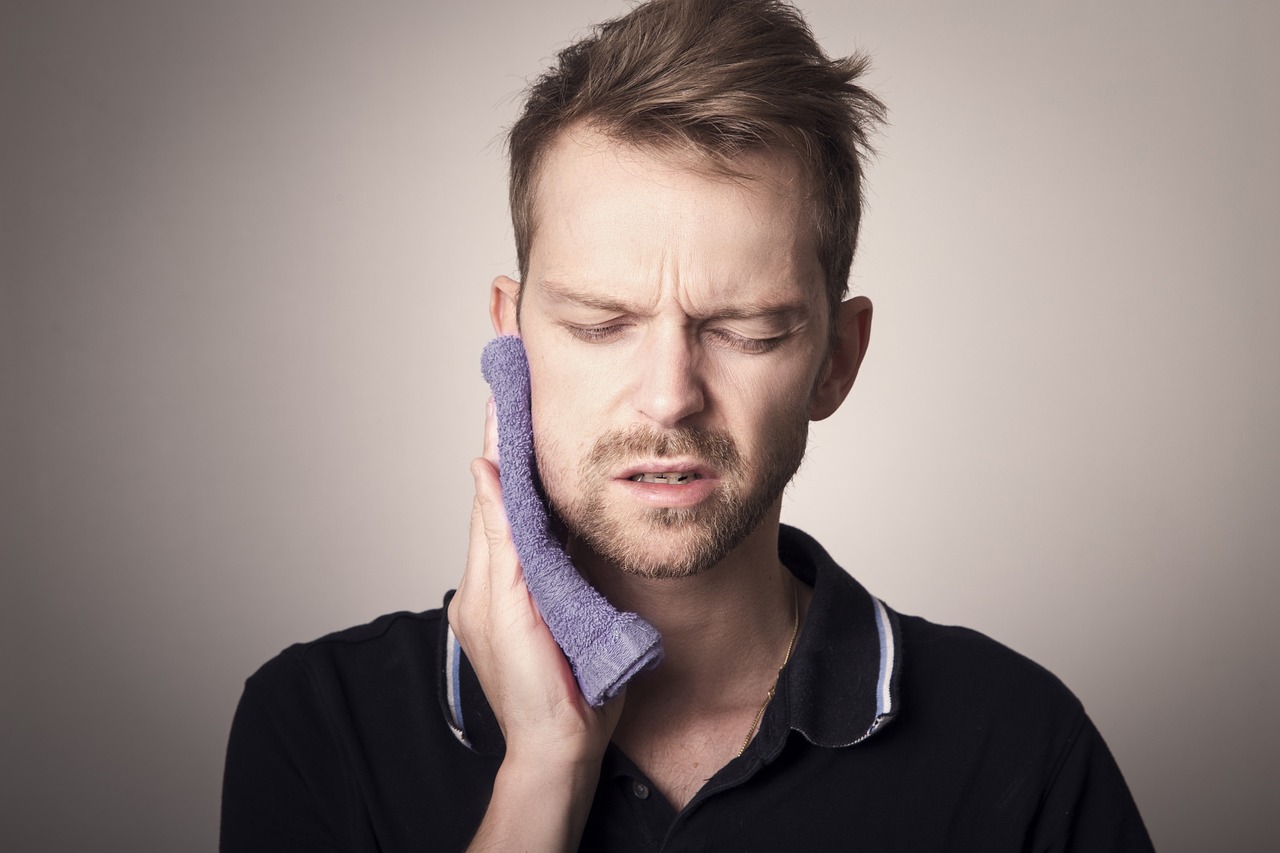8 TMJ Self-Care Exercises to Get Rid of Jaw Pain
Do you suffer from jaw pain? Does it keep you up at night or cause you to wake up feeling like your mouth is stiff and hurt? If so, you’re not alone. TMJ disorders are a problem that affects 10-35 million people in the United States every year.
We understand that jaw pain may be frustrating, and at Mint Dental MN, we’ll help you. You can do these best 8 TMJ self-care exercises to relieve and help maintain your TMJ disorder without leaving home.
In This Article:
- Common Causes of TMJ Disorders
- Signs and Symptoms of TMJ Disorders
- 8 TMJ Self-Care Exercises To Ease Jaw Pain
- How long can TMJ disorder last?
- Can TMJ disorder cause tooth pain?
- Avoid doing and eating these things:
- Bad habits that could cause TMJ disorder:
- Conclusion
Common Causes of TMJ Disorders
Your jaw moves because of your temporomandibular joint (TMJ) when you talk, eat, or even yawn. The joints, ligaments, and muscles control both sides of your jaw. When these parts aren’t in the correct position, your jaw feels stiff and hurts.
Every time you have TMJ disorders, there may be several causes, but don’t ignore jaw pain no matter what the reason. Here are some of the common causes:
- Arthritis
- Infections
- Autoimmune diseases
- Joint dislocation or injury
- Breathing tube before surgery
- Clenching or grinding your teeth while you sleep
- Mouth open for a long time during a dental procedure
According to the TMJ Association, TMJ can also be caused by other factors, including genetic, hormonal, and environmental ones. In addition, their research shows that genetic factors lead to TMJ and help the development of new TMJ treatments.
The fact that jaw problems are common in women trying to have children has also led to studies into the role of female hormones, especially estrogen, in TMJ.
Signs and Symptoms of TMJ Disorders

TMJ disorder is a common condition that can cause pain and discomfort. It might have a short- or long-term effect on one or both sides of your face.
The symptoms might range from minor joint noises to loud, paralyzing pain and dysfunction. But some people say they don’t feel pain but can’t move their jaws. The following are possible symptoms:
- Dizziness
- Locked jaw
- Headaches
- Vision difficulties
- Jaw muscle tightness
- Swollen side of your face
- Limited mouth movements
- Pain and ringing in your ears
- Tooth pain without dental problems
- How your teeth fit together changes
- Pain in the face, jaw, neck, shoulders, and ear.
- Clicking or popping jaw noises when opening or shutting mouth.
8 TMJ Self-Care Exercises To Ease Jaw Pain
Many people who suffer from TMJ symptoms have found relief by strengthening and stretching their jaw. Don’t continue the exercises if it causes you further pain or discomfort. So, it’s best to talk to a doctor, dentist, or physical therapist before you start exercising.
Here are 8 TMJ self-care exercises to ease jaw pain that you can do at your work or home:
1. Resisted mouth-opening exercise
You can apply a tiny amount of pressure on your chin when opening your mouth. To do the exercise:
Step 1: Put your thumb finger below your chin.
Step 2: Then, open your mouth as slowly as possible.
Step 3: Gently push your thumb against your chin to feel pressure.
Step 4: Hold for 3–6 seconds.
2. Resisted mouth closure exercise
Another way is to put pressure on your chin while trying to close your mouth. To do the exercise:
Step 1: Put your thumb below your chin and index finger in front of the chin.
Step 2: Next, squeeze your chin with both fingers.
Step 3: Gently press down on the chin while closing your mouth.
3. Jaw movement from side to side
This exercise strengthens the muscles by moving the jaw from side to side. To do the exercise:
Step 1: Grab a popsicle stick or any woodcraft object about one-quarter of an inch thick and gently bite down between the front teeth.
Step 2: Move your jaw slowly from side to side.
Step 3: As you get more comfortable with the exercise, stack more objects between your teeth.
4. Forward motion of the jaw
Similar to the side-to-side movement of the jaw, you need an object about a quarter of an inch thick. To do the exercise:
Step 1: Bite an object about one-quarter of an inch thick between the front teeth with gentle pressure.
Step 2: Make a slow back-and-forth movement with your jaw until your bottom teeth overlap your upper teeth.
Step 3: As you get better at the exercise, stack more objects between your teeth.
5. Keep your tongue up
This simple movement strengthens jaw muscles while also increasing their range of motion. To do the exercise:
Step 1: Touch the roof of your mouth with your tongue when sitting or standing.
Step 2: Stretch your jaw as far as possible, and don’t let your tongue drop. Keep it on the roof.
Step 3: You can do this exercise more than once.
6. Jaw relaxation exercise
It’s crucial to relax the muscles in your jaw since they might sometimes get very tight. To do the relaxation exercise:
Step 1: Place your tongue flat on the top of your mouth, right behind your front teeth.
Step 2: Drop your jaw gently and keep your mouth slightly open.
Step 3: Hold for a few seconds until the muscles feel relaxed.
7. Chin tucks exercise
This exercise strengthens your cervical muscles and improves head-and-spine alignment. To do the exercise:
Step 1: Stand up straight and put your chin under your neck. Then put your shoulders back and lift your chest. You will create a “double chin” by doing this.
Step 2: Repeat ten times while holding for three seconds.
8. Goldfish exercise
This method helps you align your jawbone when chewing. To do the exercise:
Step 1: Put the tip of your tongue against the top of your mouth.
Step 2: Then, Place your index finger in the left TMJ and your right index finger on your chin.
Step 3: Put a little pressure on both fingers and slowly drop your chin while keeping your tongue against the roof of your mouth.
Do the same thing for the right TMJ. Perform this exercise six times per day, every day.
How long can TMJ disorder last?

Unfortunately, it is impossible to predict how long TMJ disorder may last. It can differ for each person and depends on what caused it and how badly the jaw joint is damaged. However, the duration of painful TMJ might range from hours to years.
The pain is usually temporary in mild to moderate cases, and you can treat it with hot or cold packs, massages, or medications. In the worst cases, the pain may last several weeks and call for medical attention. If left untreated, it could also result in long-lasting pain.
You can shorten the duration of a TMJ disorder and reduce the pain while it’s happening with the proper diagnosis and therapy. You must discuss the best treatment options with your dentist.
Can TMJ disorder cause tooth pain?
Yes, TMJ problems can result in tooth pain because it is close to the muscles, ligaments, and nerves. So, when you’re suffering from TMJ pain, it can spread to other parts of your mouth, face, ears, neck, and head.
Avoid doing and eating these things:
If you have TMJ, it’s essential to avoid certain activities and foods that can force you to open your mouth wide and make your symptoms worse. To keep TMJ symptoms under control, here are some things to avoid:
- Don’t eat crunchy or hard food.
- Taking big mouthfuls of food
- Foods that need a lot of chewing, such as gums or chewy meats
- Don’t scream or yawn
- Don’t play sports that can accidentally hit your jaw or face
Bad habits that could cause TMJ disorder:
Some people are unaware that a harmless activity might result in jaw pain. Be mindful to stop these bad habits, so your jaw doesn’t have to go through unnecessary pain.
- Stop clenching and grinding your teeth.
- Using your hand to rest your jaw all the time
- Don’t open packages with your teeth
- Having bad posture, such as slouching
- If you have kids, prevent them from sucking their thumb or other objects.
Conclusion
TMJ self-care exercises are generally harmless and can help some people relieve their symptoms. It is simple for someone to do them every day at home. Also, a TMJ splint is another effective way to treat your TMJ issues. The goal of the splint treatment is to restore the function of the jaw muscles and reduce pain by making sure the bite is balanced.
Take it easy before starting TMJ exercises. At first, you could have some soreness, but it should be manageable and get better over time. If your pain worsens after performing TMJ exercises, call Mint Dental MN to schedule an appointment.
Dr. Marwa and Dr. Tiwana have the skills and knowledge to protect your dental health, and they can find out what causes your TMJ pain. They aim to help you feel better without surgery or prescription medicines.
Do you have any questions? Comment down below.
